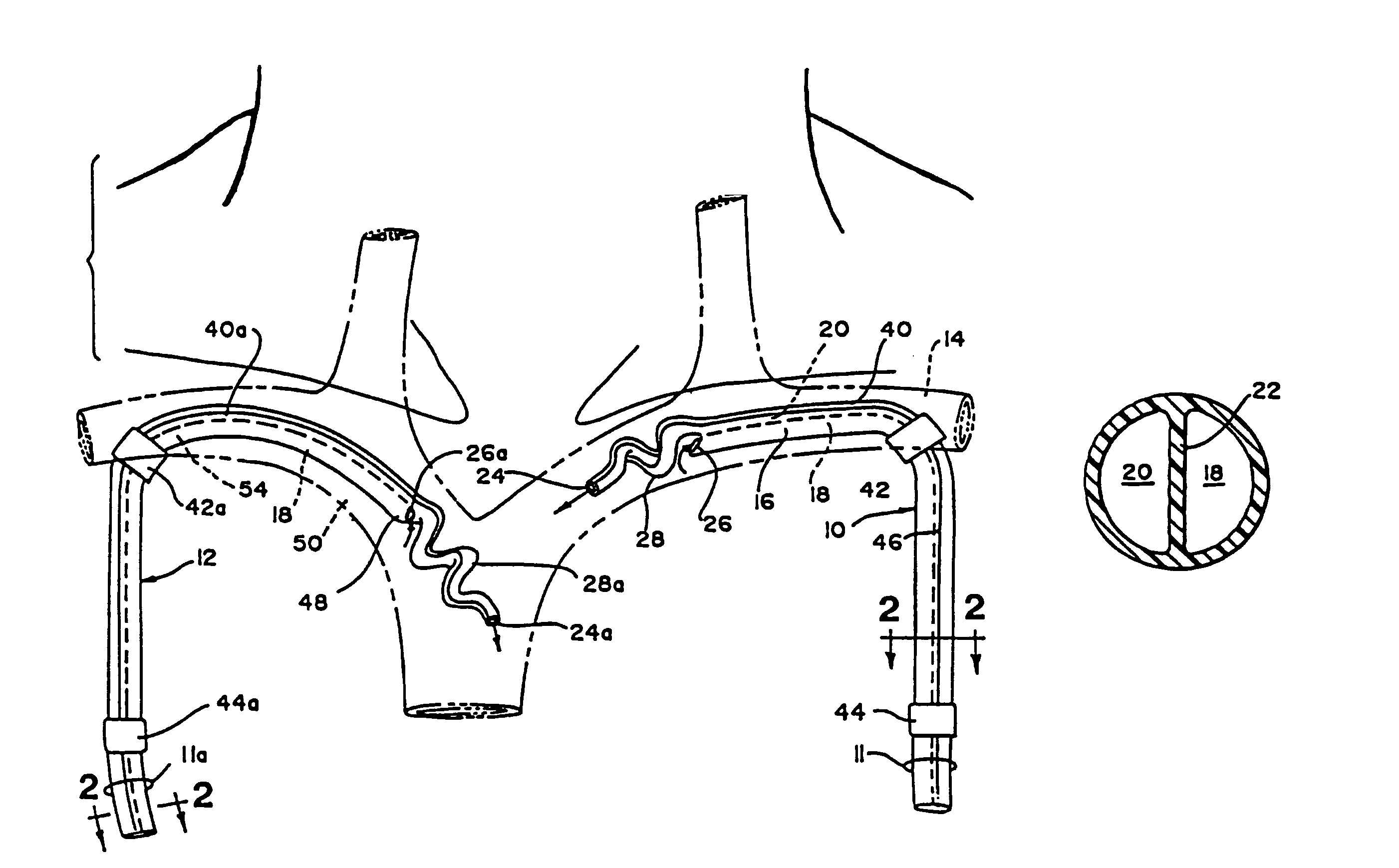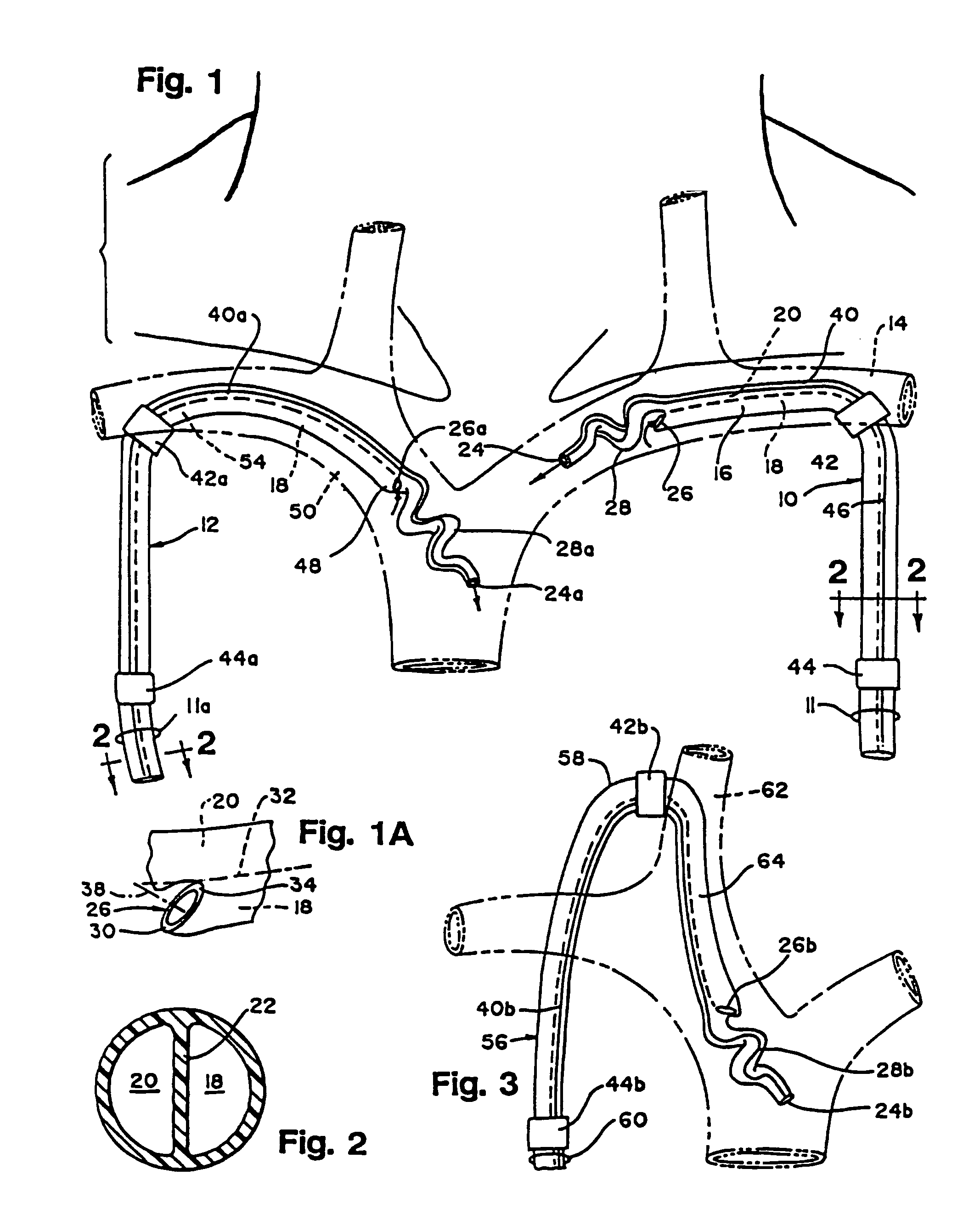Multiple lumen catheter for hemodialysis
a hemodialysis and lumen catheter technology, applied in the field of multi-lumen catheters for hemodialysis, can solve the problems of tissue damage, intimal tissue occlusion of the outflow port of the vein, and the risk of infection and clotting of the indwelling catheter which connects to the arteriovenous system
- Summary
- Abstract
- Description
- Claims
- Application Information
AI Technical Summary
Benefits of technology
Problems solved by technology
Method used
Image
Examples
Embodiment Construction
[0010]By this invention, a multiple lumen catheter for hemodialysis or the like is provided. The catheter has a distal end portion in which at least a pair of the catheter lumens each communicate with the exterior through aperture means.
[0011]In accordance with this invention, the aperture means of one of the lumens defines a first port at essentially the distal catheter end. The aperture means of the other of the lumens defines a second port spaced proximally along the catheter from the distal end and first port. In one embodiment, the second port is defined by a substantially angular wall which has a radially outer portion relative to the catheter axis that is positioned slightly closer to the catheter distal end than a radially inner portion of the same substantially angular wall. The result of this is that the second port faces radially inwardly to a degree, with the axis of the second port being angled radially inwardly at an acute arc angle to the catheter axis.
[0012]By this m...
PUM
 Login to View More
Login to View More Abstract
Description
Claims
Application Information
 Login to View More
Login to View More - Generate Ideas
- Intellectual Property
- Life Sciences
- Materials
- Tech Scout
- Unparalleled Data Quality
- Higher Quality Content
- 60% Fewer Hallucinations
Browse by: Latest US Patents, China's latest patents, Technical Efficacy Thesaurus, Application Domain, Technology Topic, Popular Technical Reports.
© 2025 PatSnap. All rights reserved.Legal|Privacy policy|Modern Slavery Act Transparency Statement|Sitemap|About US| Contact US: help@patsnap.com



